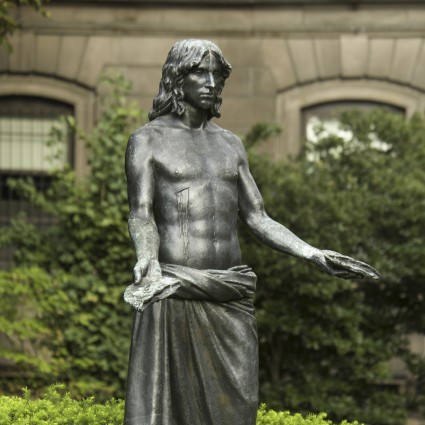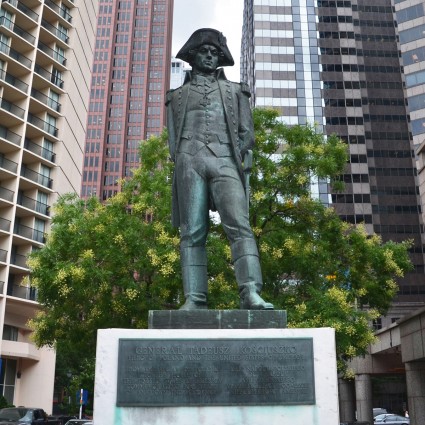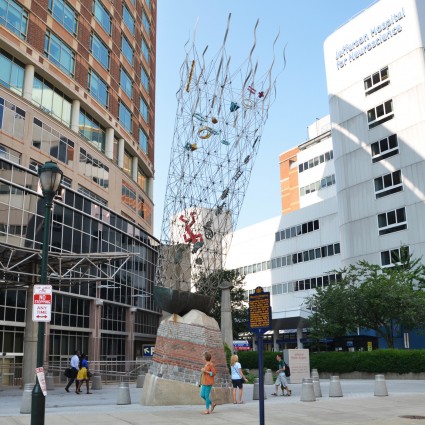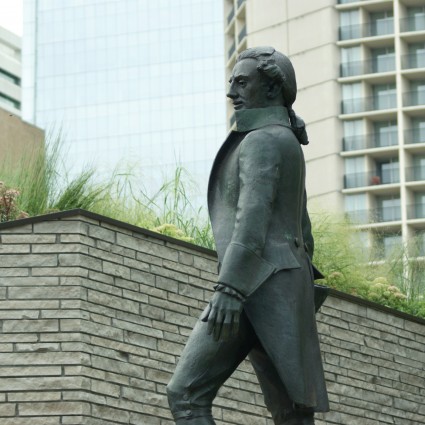Mikolaj Kopernik (1473–1543), better known by the Latinized version of his name, Nicolaus Copernicus, laid the foundations of modern astronomy. In an age when philosophers and the Church believed that the entire universe centered on the earth, the Polish mathematician and churchman dared to suppose that the earth revolved around the sun.
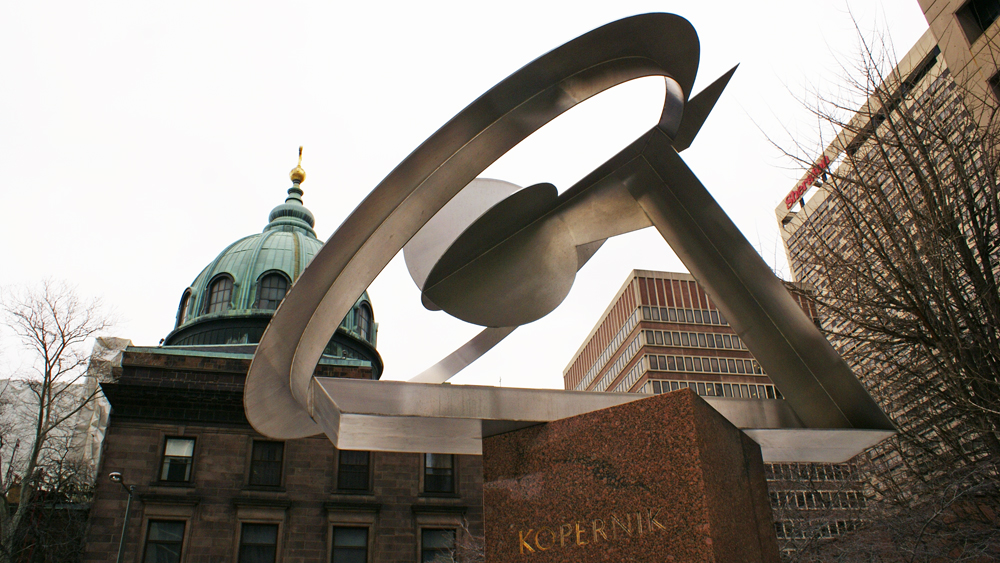
The memorial sculpture by Connecticut artist Dudley Talcott was commissioned and donated to the city by a committee of Polish Americans formed to honor Kopernik on the 500th anniversary of his birth. In Talcott’s design, the 16-foot circle symbolizes the earth’s orbit; fixed at the center is the sun, its rays extending to infinity.
The angular framework alludes to Kopernik’s homemade astronomical instruments, some of which were exhibited at the Franklin Institute before the sculpture’s unveiling. The 1973 dedication of Kopernik climaxed a year-long celebration of ethnic heritage by Philadelphia’s large community of Polish Americans.
Adapted from Public Art in Philadelphia by Penny Balkin Bach (Temple University Press, Philadelphia, 1992).
Voices heard in the Museum Without Walls: AUDIO program: Derrick H. Pitts is Chief Astronomer and Director of the Fels Planetarium at the Franklin Institute. Joseph L. Zazyczny (1935-2020) was a founder and former President of the Polish Heritage Society. | Segment Producer: Ann Heppermann
Museum Without Walls: AUDIO is the Association for Public Art’s award-winning audio program for Philadelphia’s outdoor sculpture. Available for free by phone, mobile app, or online, the program features more than 150 voices from all walks of life – artists, educators, civic leaders, historians, and those with personal connections to the artworks.
This artwork is part of the Along the Benjamin Franklin Parkway tour
